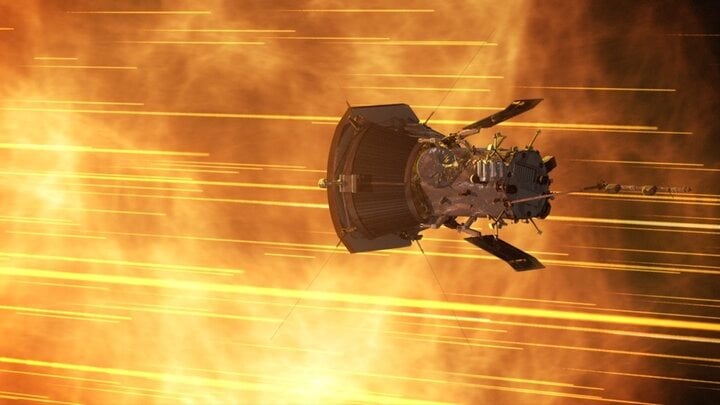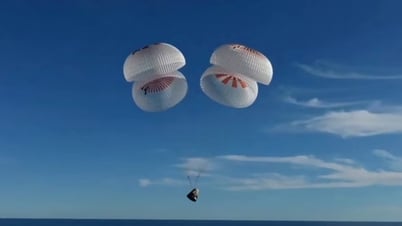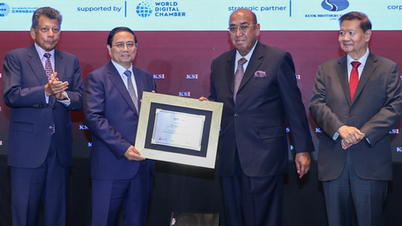How the Parker spacecraft explores the Sun. (Source: NASA)
The July 27 event marked a turning point in the mission's 17th flyby of the Sun, as the Parker spacecraft gathered data on the heated charged particle winds and intense magnetic fields surrounding Earth's closest star.
The new record was set less than three years after the previous speed record of 586,863.4 km/h, also set by Parker. For comparison, at such a high speed, a spacecraft could circle the Earth 15 times an hour or fly from New York to Los Angeles, USA, in just over 20 seconds, according to Science Alert.
Not only did Parker reach a record speed, it also flew closest to the Sun, just 7.26 million kilometers above the plasma ocean that is believed to be the star’s surface. Since the Sun is nearly 1.4 million kilometers in diameter, that’s like standing just a few feet from a campfire—close enough to smell the smoke but not so close that your hair will be singed.
This achievement was not the result of powerful propellants but of perfect timing and trajectory.
To complete its mission, Parker needs to fly through the Sun’s corona. NASA flies the probe past Venus to take advantage of the planet’s gravity, slowing the probe down in a spiral. After a total of 24 orbits around Venus, Parker can finally reach the Sun and collect a wealth of information that will help researchers better model the Sun’s activity.

NASA's Parker Solar Probe spacecraft.
With seven more orbits of the Sun left for the Parker spacecraft, new records are sure to emerge.
Since its launch in August 2018, Parker has continued to set records. It surpassed the 1976 record set by the Helios 2 spacecraft, becoming the closest man-made object ever to the Sun. In addition, Parker was also the first spacecraft to fly through the outermost layer of the Sun's atmosphere.
Equipped with an advanced heat shield, the probe’s mission is to study the solar corona and collect important data. The overall goal is to learn about the structure of the Sun, the corona, and the origin of the solar wind. Such information is extremely important because solar processes can affect space weather, threatening satellites, communications networks, and even power grids on Earth.
In early September, Parker flew through one of the most intense coronal mass ejections (CMEs) ever observed. The event validated a two-decade-old theory that CMEs interact with interplanetary dust, helping to predict space weather.
Tra Khanh (Source: sciencealert.com)
Source


![[Photo] Funeral of former President Tran Duc Luong in Quang Ngai](https://vphoto.vietnam.vn/thumb/1200x675/vietnam/resource/IMAGE/2025/5/25/ccf19a3d8ea7450bb9afe81731b80995)

![[PHOTO] Hanoi fences off demolition of "Shark Jaws" building](https://vphoto.vietnam.vn/thumb/1200x675/vietnam/resource/IMAGE/2025/5/25/1b42fe53b9574eb88f9eafd9642b5b45)
![[Photo] Welcoming ceremony for Prime Minister Pham Minh Chinh and his wife on an official visit to Malaysia](https://vphoto.vietnam.vn/thumb/1200x675/vietnam/resource/IMAGE/2025/5/25/dc30203c3ae24da3990266ec3b29bb2d)
![[Photo] French President Emmanuel Macron and his wife begin state visit to Vietnam](https://vphoto.vietnam.vn/thumb/1200x675/vietnam/resource/IMAGE/2025/5/25/03b59c7613144a35ba0f241ded642a59)
![[Photo] Ea Yieng commune settlement project abandoned](https://vphoto.vietnam.vn/thumb/1200x675/vietnam/resource/IMAGE/2025/5/25/57a8177361c24ee9885b5de1b9990b0e)





























































































Comment (0)